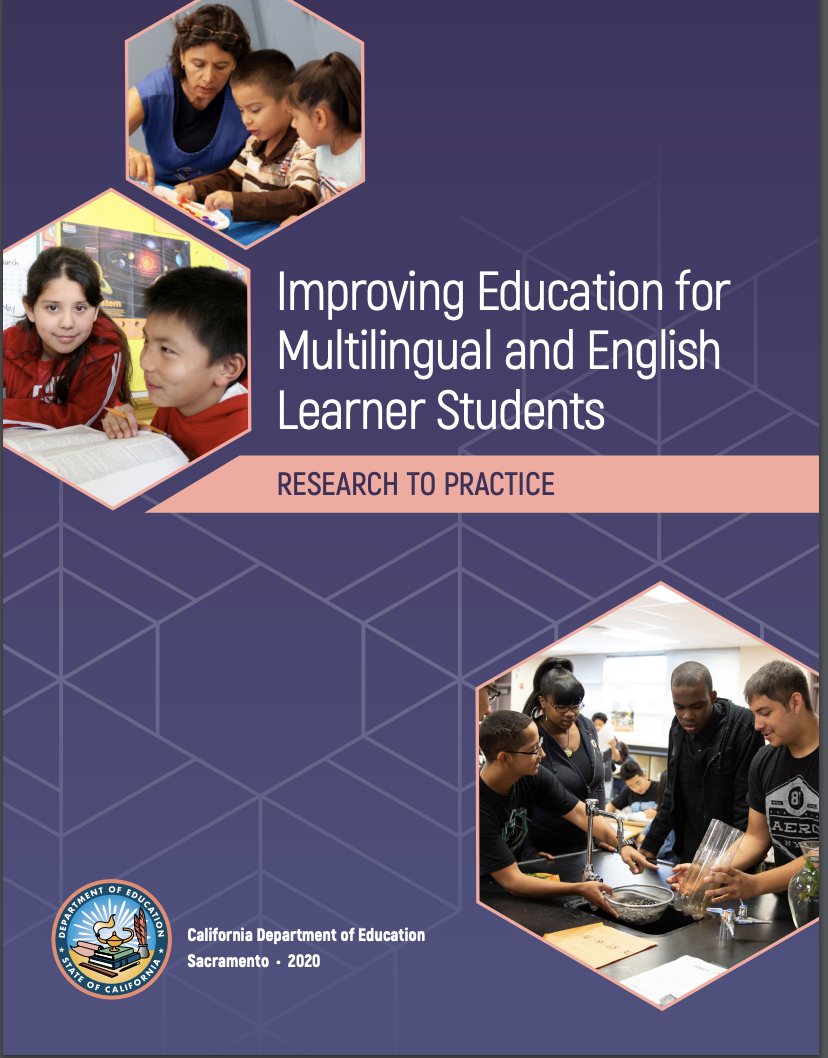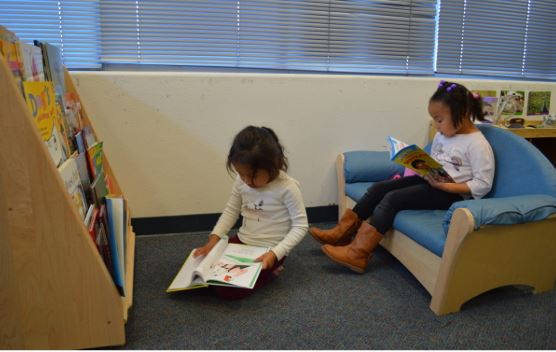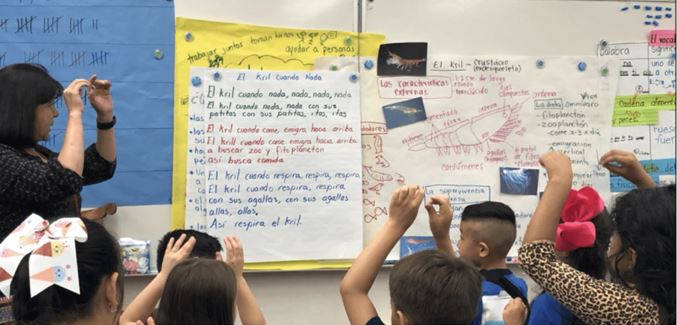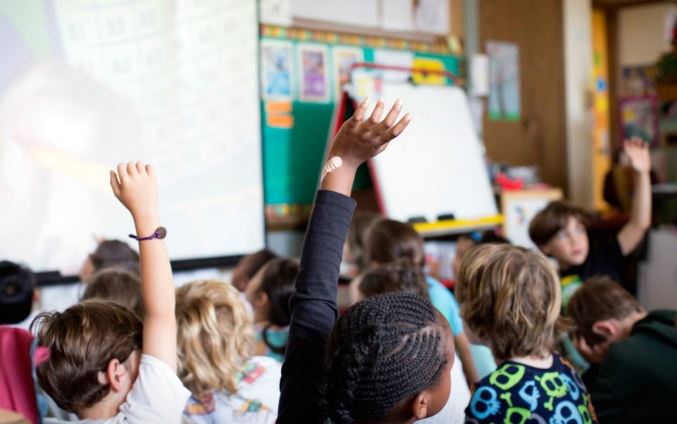New CDE Publication!
Nancy Peng2023-04-06T17:51:41-07:00Improving Multilingual and English Learner Education: Research to Practice
Dear SEAL family,
We are thrilled to announce that SEAL contributed to California Department of Education’s recently published guide for California educators, Improving Multilingual and English Learner Education: Research to Practice. This publication is an important resource for implementing practices and programs aligned to the most current research underlying the California English Learner Roadmap policy. The need for this actionable guidance on implementation of recent research on best practices that address educational equity for DLL/EL students is evermore urgent.
Here is a list of the full contents of this important publication:
- Introduction: Improving Multilingual Education: Accelerate Learning. By Veronica Aguila, Marcela Rodriguez, and Gina Garcia-Smith
Chapter 1: The Power and Promise of California’s Multilingual Learners. By Molly Faulkner-Bond, Pamela Spycher, Laurie Olsen and Patricia Gandara - Chapter 2: Asset-Based Pedagogy: Student, Family and Community Engagement for Academic and Social-Emotional Learning of Multilingual Students. By Francesa Lopez, Raju DeSai and Allyson Tintiangco-Cubales
- Chapter 3: Multilingual Programs and Pedagogy: What Teachers and Administrators Need to Know and Do. By Laurie Olsen, with Carla Herrera, Martha Martinez and Heather Skibbins
- Chapter 4: Early Learning and Care for Multilingual and Dual Language Learners Ages Zero to Five. By Linda Espinosa and Jennifer Crandell
- Chapter 5: Content Instruction with Integrated and Designated ELD in the Elementary Grades. By Mary Schleppegrell and Alison Bailey
- Chapter 6: Content and Language Instruction in Middle and High School: Promoting Educational Equity and Achievement. By Pamela Spycher, Diane August and Maria Gonzalez-Howard
- Chapter 7: Creating Schools and Systems that Support Asset-Based, High Quality Instruction for Multilingual Learners. By Maria Santos and Megan Hopkins
Our contribution in Chapter 3, “Multilingual Programs and Pedagogy: What Teachers and Administrators Need to Know and Do,” is written by SEAL founder Dr. Laurie Olsen, in collaboration with SEAL staff Dr. Martha Martinez, Heather Skibbins and Carla Herrera, and it draws in part from the innovative work of the SEAL Bilingual Working Group and partnerships with SEAL schools. SEAL’s original pilot design drew heavily on CDE’s previous publication, Improving Education for English Learners: Research-based Approaches, published in 2010. We are excited to continue being a part of the greater effort to cultivate school and district-wide learning systems and cultures that uplift and prioritize our DLL/EL students.
During unprecedented moments like these, our commitment to supporting DLL/EL students, educators and families has only been reinforced. We look forward to continuing to do this necessary and important work in partnership with you!
In Solidarity,
The SEAL Team













